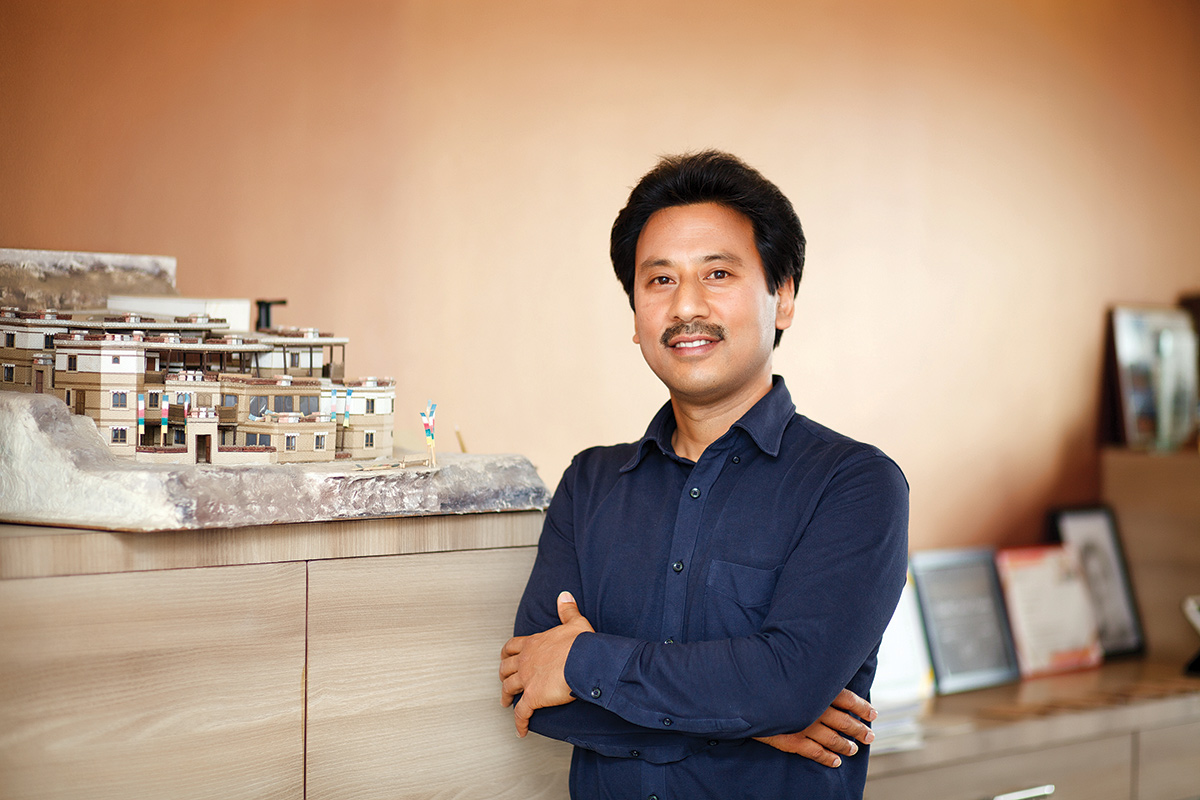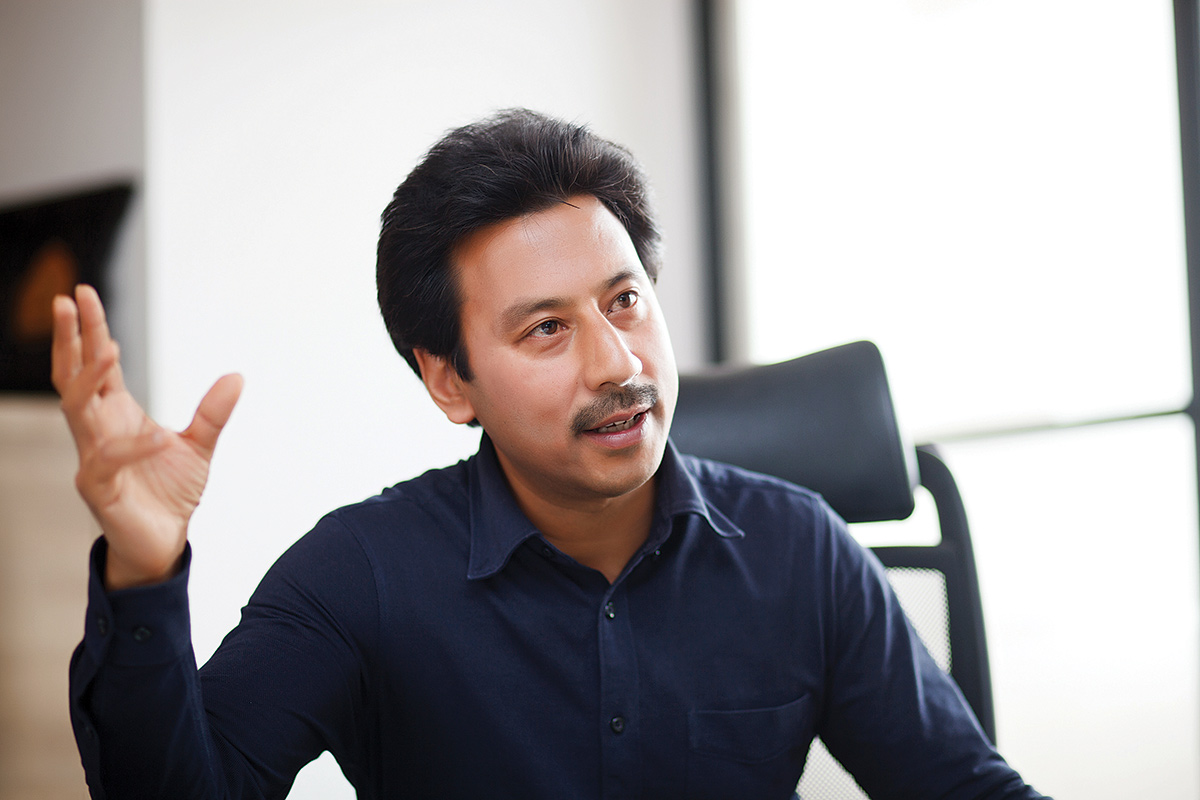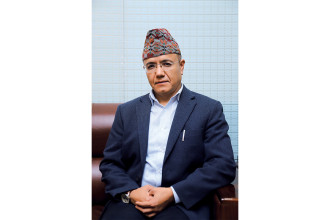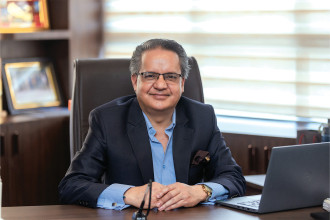
Ar. Sarosh Pradhan heads his firm, Sarosh Pradhan and Associates, as the Principal Architect which was established in 1996 with a strong belief that design solution lies in research, dialogue and interactions that seek for contemporariness and relevance. He has won several design competitions and was also awarded the JK Foundations’ Young Architect of the Year 2004 award in Bangalore in 2005. He considers himself as an artist/architect who believes in holistic living through poetry, yoga, music and meditation.
Dibesh Dangol of B360 interviewed Pradhan to gain insight into his experience as a leader and his thoughts on leadership. Excerpts:
How would you define the term ‘Leadership’?
Leadership means to have a long term vision and not just what you are doing every day. The recipe for successful leadership is to inspire people; make people feel that they are connected to something more than just work and make them feel happy with what they are doing. If people are working just for the sake of working and earning their living, it is more of a sweatshop factory. So, I would rather define leadership as a leader having certain values and those values being radiated to the people.
There are various examples of different type of leadership all around the world. I think a cycle happens where people tried to evaluate things in different ways and learn. If everything was good all the time, then people wouldn’t learn. So, everybody needs to go through those times and learn, and in those time leaders become very important. For example, there was a certain kind of response towards the earth and environmental issues, but suddenly that changed because the leaders looked at it differently. I feel that to establish correct values that can make a change in peoples’ lives in a positive way is good leadership.
What are the most important values a leader should demonstrate?
People look up to leaders especially in difficult times to get direction. So, a good leader should have calmness and shouldn’t aggravate people. A leader needs to have a deep insight and have the correct core values to be able to inspire people. If you are not able to inspire people no matter whatever things you say or people are not able to relate to the things you say, then a leader has to come down to the level where people can understand him/her. So, a good leader should be able to properly communicate the core values and culture of the organisation and guide people.
What are your greatest strengths and weaknesses as a leader?
As a person in a creative field, everything seems to be timeless. You look at things and you forget time, and an important trait of a leader is to value time. So, a weakness of mine is sometimes when I am involved in certain things, I forget the time. I don’t know if it is a good thing or a bad one because being timeless in the way you think and look sometimes is very valuable and just being time conscious doesn’t make sense especially in my field.
I feel my greatest strength is that I always try to visualise more than what is generally viewed. I tend to put myself in a situation of being a child and try to look at it from a very simple viewpoint which gets very profound. So, my strength is that for the things I believe in, I give my time to it.
How is a leader different than a manager?
The vision, core values and inspiration; a manager will just be able to manage things happening in the organisation, but a leader is someone that has a deeper vision of a project, shares the core values and inspires people in the organisation.
How do you encourage the development of your employees?
We have a lot of interaction due to which our employees feel like they are part of a family and not just employees. We have regular presentations on architecture, art or topics of creativity every week in which one of them is selected to present. It is a way for them to become better at expressing themselves and for an employer to look at what they value. When a person writes and when a person speaks in front of a group of people, it is very different. Sometimes, you don’t know where their writing is coming from. If a person is in front of you, you can know the psychology of whether he is having a good day, he is not feeling well or he is excited about something else. So, we have these interactions among us where I allow them to open themselves up.
I feel that when employees get that level of trust and communication among whoever is around with them or when they can talk to the employer not as an employer but as a friend, they will open up and much more. But, to come to that level of friendship the employer will also need to step down from being a boss and needs to place himself in their shoes. When a leader allows an employee to be comfortable and flexible, and when s/he wants them to give their hundred per cent, they will give back 110% effort because that level of mutual trust is built between the employer and the employee. So, how a leader works around to gain employee trust is a very important aspect.

Have you rallied your team in the past during difficult projects, tasks or tight deadlines?
Yes, I have. When you work around deadlines and timelines, you are looking in a single direction. I remember taking part in one competition where we were all looking at a certain design which we really felt we related to. But two days before the presentation, I internally felt that something was missing in the project. It was a last minute call. I told them we should change the design because it is too much from the architect perspective and we are not thinking from the user viewpoint to which they saw the significance of my idea and decided to change the project for which we had to work odd hours. Coincidently, there was a bandh the next day due to which we got an extra day and also won the competition.
So, I think if your intentions are good, you will be supported. I am not saying the bandh supported me, but I mean that we were brave enough to say let’s go with the better idea. These are difficult decisions because people had worked for 2-3 weeks and then you have to chuck that idea out of the window because of a certain thinking and then pull all your energy within a few days to put the next idea together. But, that’s the level of trust a leader needs to build with his/her people and inspire them.
How do you formulate plans and delegate responsibilities to your team?
First and foremost, we visit the project site and discuss with the client. Without visiting the site and without discussing with the client, and just designing on paper will make the project one-sided. I always try to relate myself to the project on the ground as much as possible and then have a brainstorming session with my team where everyone is equal. I do so because as much as I know the project, sometimes the best ideas come out from people who don’t know anything about the project. When it comes to executing it, we don’t want to waste our energy. So, we put our energy in a few of the good ideas that we feel can be developed further. After that, we delegate responsibilities to senior architects to build the designs. But, from time to time we have a presentations and discussions with our young people about the project. I even discuss the project with my mother and the maid. I always try to get as many opinions as I can on a project because I want the design to be user-friendly and not just from an architect’s perspective.
What are the characteristics of a good Principal Architect?
Good leadership, vision, vibe and energy due to which people feel happy to be a part of the project or an organisation. We all know that everyone wants to be independent at some stage in life. So, in our organisation, we have had many young people joining, gathering experiences, and move on to doing bigger projects on their own or being associated with us. It’s good that you let people come and go. Though employee turnover is considered not healthy for an organisation, if they are doing well and you are also doing well, it’s fine to let people go.
Whose leadership skills inspire you?
I met B. V. Doshi who is a Pritzker Architecture Prize 2018 Awardee and he gave me a book called Paths Uncharted in which he has described his journey which he made at a very young age. He took a one-way ticket to Paris, France and worked with a famous Swiss-French architect, Le Corbusier. But, it wasn’t that easy for him. Le Corbusier told him that he would get no pay for eight months and could come and sniff around his office. Still, B. V. Doshi worked for him and became Le Corbusier right-hand person in many projects that he did in India and other countries. When I read his book, it really inspired me to look at life in a very open and transparent way, and also in a way that you are rooted in your culture but you can meet anyone in this world. That kind of openness to learn from a living master was awe-inspiring for me. We also connected through yoga and his overall energy inspired me. When I read his book and saw his sketches, I felt that the more you are grounded the better you’ll be able to contribute. So, he is one person that I look up to.
Have you ever struggled with work-life balance?
Initially a lot because I used to look at work, life and family individually, and didn’t really understand that it’s all integrated. One must never slot them differently. Just for living a good life it doesn’t have to mean that you have to work hard and earn so much money. It’s all about how a person defines his/her life and that can bring the much needed work-life balance. Yoga, silence, introspection, reflection, trust and respect can help in maintaining work-life balance.
If you have the trust of people around you suddenly there will be a different level of enthusiasm in their work. If a person is happy with their work, s/he will have that calmness in life and be able to do anything effortlessly without having to struggle with anything in life.




-(1)-1752214965.jpg)